Chimney Swift Project High-Resolution Images
Photos may be reproduced with
credit given as indicated
Click on image to download a high resolution version
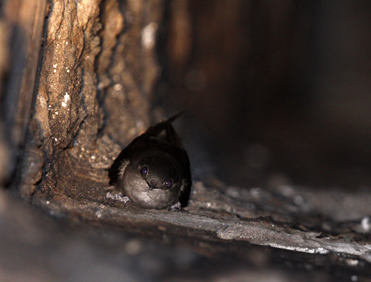 |
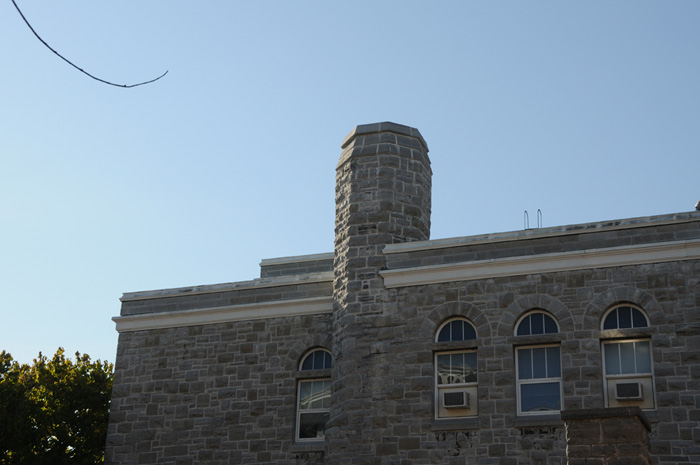 |
|
|
Chimney swifts (Chaetura pelagica) in flight have cigar-shaped bodies attached to swept-back wings. Note the spine-tipped tails. Swifts catch flying insects at altitudes higher on average than other insect eating birds like swallows and flycatchers. Credit: Mike Veltri. |
Chimney swift roosting inside a domestic chimney used as a nest site (note, not from the Fleming hall chimney). Swifts cling to the vertical wall with short legs and long claws, propping their spine-tipped tails against the wall below them. Credit: Bruce Di Labio. |
Built in 1904, Fleming Hall contained the central heating plant for campus until it was decommissioned in 1927. After a fire in 1933 the building and chimney were rebuilt. It remained open to roosting swifts until about 1993 when it was screened off to exclude the birds. Credit: Chris Grooms, Queen's University. |
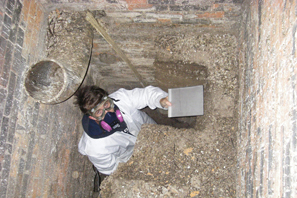 |
||
|
Built in 1904, Fleming Hall contained the central heating plant for campus until it was decommissioned in 1927. After a fire in 1933 the building and chimney were rebuilt. It remained open to roosting swifts until about 1993 when it was screened off to exclude the birds. Credit: Chris Grooms, Queen's University. |
Swifts' eye view down the ~1m cross-section of the octagonal opening of Fleming Hall chimney. Birds roost on the inside walls of the chimney. Credit: Chris Grooms, Queen's University. |
After excavating into the chimney and up through the guano deposit, samples were taken from the face of the deposit carved out like a soil test pit. A 1cm high stainless steel tray was used to "peel" off each layer. Protective breathing gear was used against dust and pathogens. The work was done before swifts returned from migration. Credit: Chris Grooms, Queen's University. |
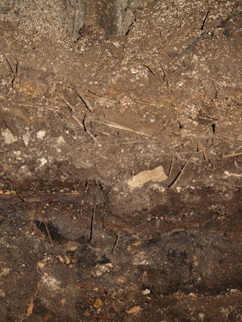 |
||
| Guano deposit profile. Layers of guano are visible in the cut-away profile inside the Fleming Hall chimney. The layers are composed of years of mainly regurgitated, indigestible bits of insects that formed the diet of the swifts. Some debris blown in from outside and chips of mortar are also visible. Credit: Chris Grooms, Queen's University. | Access was gained through a cleanout door in the basement of Fleming Hall. Guano had to be dug out of the access from the bottom of the deposit, then up and out of one corner of the chimney to make room to work. Credit: Joseph Nocera, Trent University. | Thousands of swifts going to roost in a chimney after sunset (not the Fleming Hall chimney in this photo). It is an amazing spectacle to see as they "pour" in like smoke going back down into the chimney. Source. Credit: Curt Young. |
| Thousands of swifts roosting inside a large chimney. Source: www.vauxhappening.org. Credit: Brad Benson. | Chimney swifts in flight. Swifts often fly together in small groups high overhead, loudly twittering their hi-pitched calls. Credit: Mike Veltri. | Screen mesh being removed in 2009 to allow swifts to roost on campus once again. Credit: Chris Grooms, Queen's University. |
| With the mesh removed, swifts began roosting the first day they were back in Kingston after their spring migration from wintering in South America. Credit: Chris Grooms, Queen's University. | Click on the image above to watch a short video of swifts roosting in the Fleming Hall chimney in 2009. Credit, Chris Grooms, Kingston Field Naturalists. | Magnified 8 times, these hard, indigestible bits of insects are the remains of chimney swift meals recovered from the bottom of a roosting chimney. Visible are wings and beetle wing covers (elytra). Credit: Chris Grooms, Queen's University. |
|
|
|
|
| Magnified 8 times, these hard, indigestible bits of insects are the remains of chimney swift meals recovered from the bottom of a roosting chimney. Visible are wings, beetle wing covers (elytra) and an ant head capsule. Credit: Chris Grooms, Queen's University. | Magnified 8 times, these hard, indigestible bits of insects are the remains of chimney swift meals recovered from the bottom of a roosting chimney. Visible are wings and beetle wing covers (elytra). Credit: Chris Grooms, Queen's University. | Magnified 8 times, these hard, indigestible bits of insects are the remains of chimney swift meals recovered from the bottom of a roosting chimney. Visible are wings, beetle wing covers (elytra) and an ant head capsule. Credit: Chris Grooms, Queen's University. |
 |
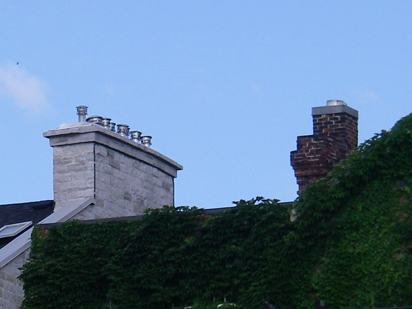 |
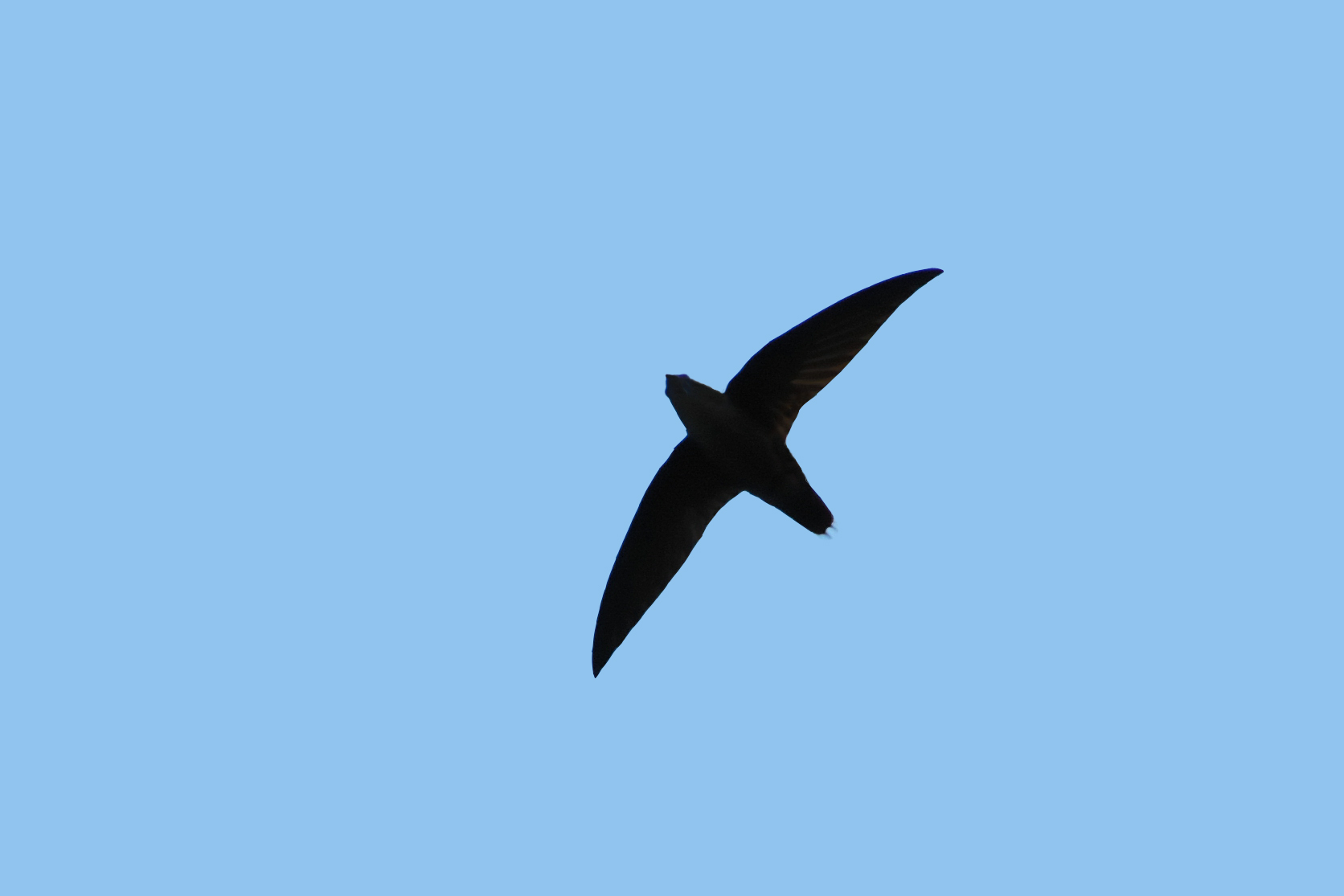 |
| Thousands of swifts going to roost in a chimney after sunset (not the Fleming Hall chimney in this photo). It is an amazing spectacle to see as they "pour" in like smoke going back down into the chimney. Credit: Larry Gridley. | Pairs of swift nest in chimneys like these. Only one pair per chimney will build a nest. Unfortunately these particular chimneys are now lined with steel and capped rendering them useless to the birds. Credit: Chris Grooms, Queen's University. | Chimney swifts (Chaetura pelagica) in flight have cigar-shaped bodies attached to swept-back wings. Note the spine-tipped tails. Swifts catch flying insects at altitudes higher on average than other insect eating birds like swallows and flycatchers. Copyright 2008 Rachel Echols. |
Link to the publication Back to Media Release
Links to media coverage of this paper:
CBC's The National With Peter Mansbridge
Calgary Hearld
Discover Magazine
CBC News- Technology and Science
Science
Spektrum.de
Le Figaro.fr
CTV News
Quirks
and Quarks
Discovery Channel
Science Now podcast (Starts at time index 6:30)

|